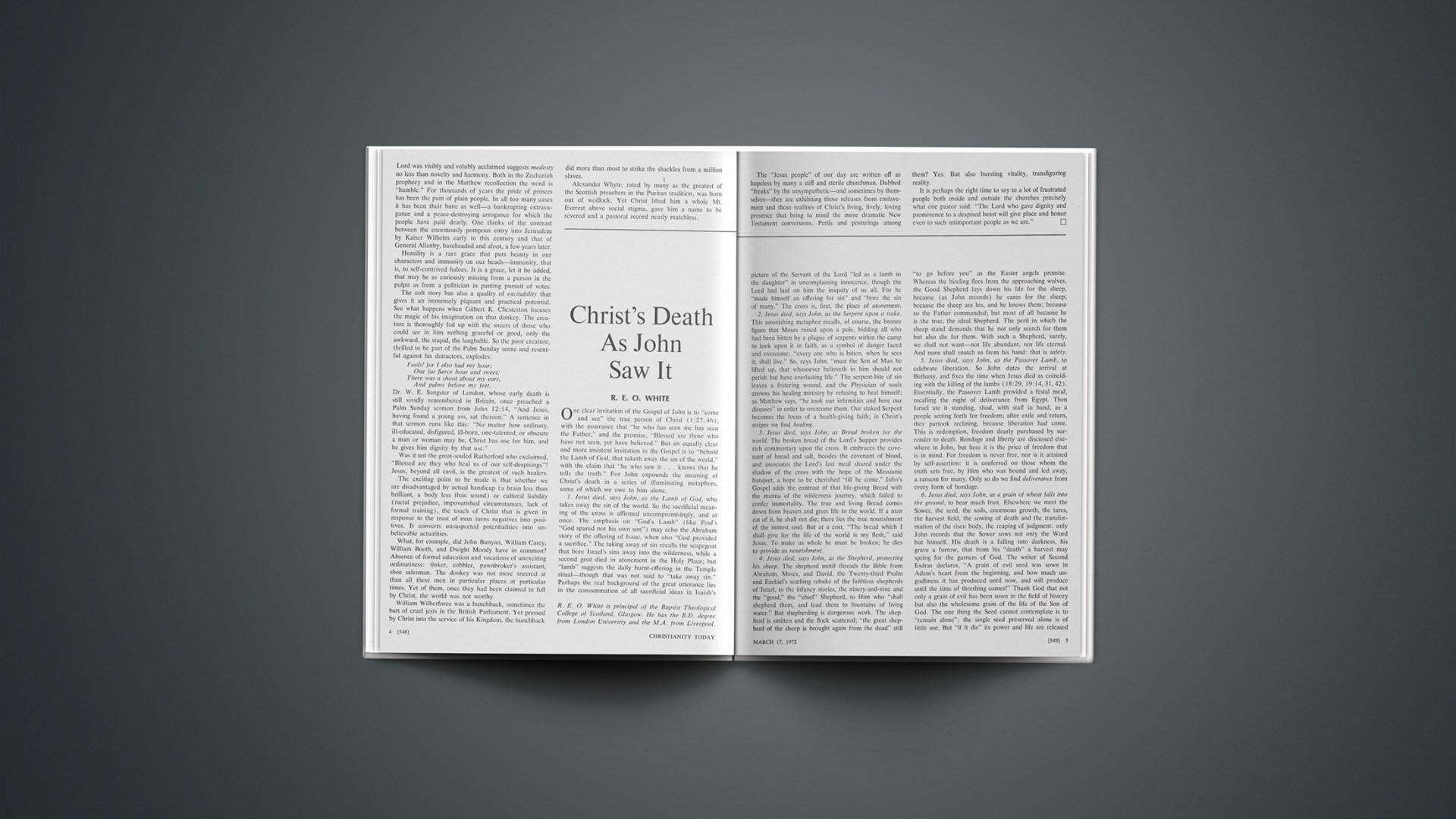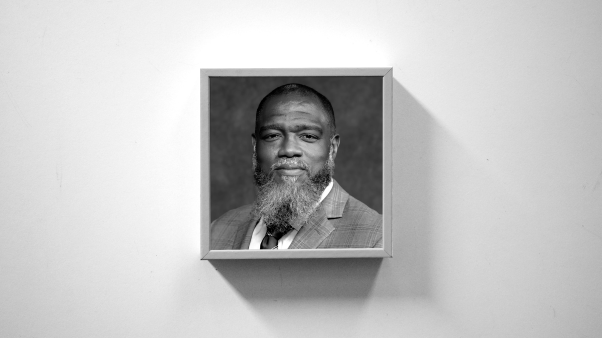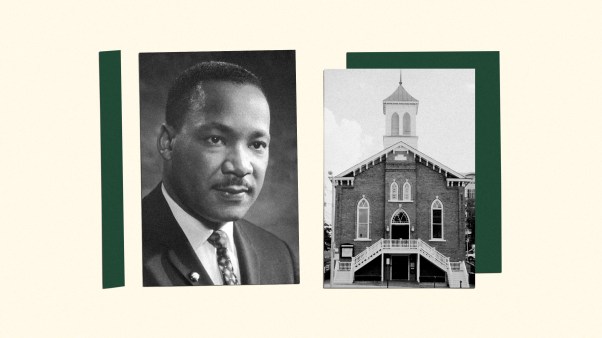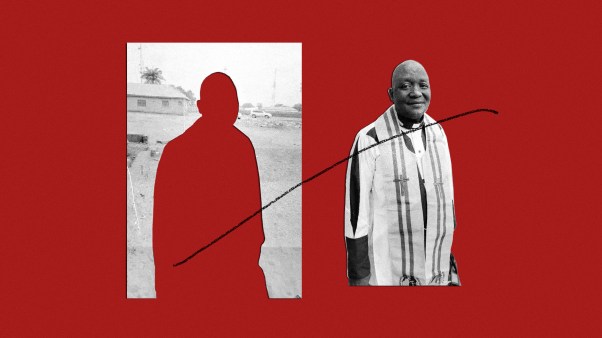One clear invitation of the Gospel of John is to “come and see” the true person of Christ (1:27, 46), with the assurance that “he who has seen me has seen the Father,” and the promise, “Blessed are those who have not seen, yet have believed.” But an equally clear and more insistent invitation in the Gospel is to “behold the Lamb of God, that taketh away the sin of the world,” with the claim that “he who saw it … knows that he tells the truth.” For John expounds the meaning of Christ’s death in a series of illuminating metaphors, some of which we owe to him alone.
1. Jesus died, says John, as the Lamb of God, who takes away the sin of the world. So the sacrificial meaning of the cross is affirmed uncompromisingly, and at once. The emphasis on “God’s Lamb” (like Paul’s “God spared not his own son”) may echo the Abraham story of the offering of Isaac, when also “God provided a sacrifice.” The taking away of sin recalls the scapegoat that bore Israel’s sins away into the wilderness, while a second goat died in atonement in the Holy Place; but “lamb” suggests the daily burnt-offering in the Temple ritual—though that was not said to “take away sin.” Perhaps the real background of the great utterance lies in the consummation of all sacrificial ideas in Isaiah’s picture of the Servant of the Lord “led as a lamb to the slaughter” in uncomplaining innocence, though the Lord had laid on him the iniquity of us all. For he “made himself an offering for sin” and “bore the sin of many.” The cross is, first, the place of atonement.
2. Jesus died, says John, as the Serpent upon a stake. This astonishing metaphor recalls, of course, the bronze figure that Moses raised upon a pole, bidding all who had been bitten by a plague of serpents within the camp to look upon it in faith, as a symbol of danger faced and overcome: “every one who is bitten, when he sees it, shall live.” So, says John, “must the Son of Man be lifted up, that whosoever believeth in him should not perish but have everlasting life.” The serpent-bite of sin leaves a festering wound, and the Physician of souls crowns his healing ministry by refusing to heal himself; as Matthew says, “he took our infirmities and bore our diseases” in order to overcome them. Our staked Serpent becomes the focus of a health-giving faith; in Christ’s stripes we find healing.
3. Jesus died, says John, as Bread broken for the world. The broken bread of the Lord’s Supper provides rich commentary upon the cross. It embraces the covenant of bread and salt, besides the covenant of blood, and associates the Lord’s last meal shared under the shadow of the cross with the hope of the Messianic banquet, a hope to be cherished “till he come.” John’s Gospel adds the contrast of that life-giving Bread with the manna of the wilderness journey, which failed to confer immortality. The true and living Bread comes down from heaven and gives life to the world. If a man eat of it, he shall not die; there lies the true nourishment of the inmost soul. But at a cost. “The bread which I shall give for the life of the world is my flesh,” said Jesus. To make us whole he must be broken; he dies to provide us nourishment.
4. Jesus died, says John, as the Shepherd, protecting his sheep. The shepherd motif threads the Bible from Abraham, Moses, and David, the Twenty-third Psalm and Ezekiel’s scathing rebuke of the faithless shepherds of Israel, to the infancy stories, the ninety-and-nine and the “good,” the “chief” Shepherd, to Him who “shall shepherd them, and lead them to fountains of living water.” But shepherding is dangerous work. The shepherd is smitten and the flock scattered; “the great shepherd of the sheep is brought again from the dead” still “to go before you” as the Easter angels promise. Whereas the hireling flees from the approaching wolves, the Good Shepherd lays down his life for the sheep, because (as John records) he cares for the sheep; because the sheep are his, and he knows them; because so the Father commanded; but most of all because he is the true, the ideal Shepherd. The peril in which the sheep stand demands that he not only search for them but also die for them. With such a Shepherd, surely, we shall not want—not life abundant, nor life eternal. And none shall snatch us from his hand: that is safety.
5. Jesus died, says John, as the Passover Lamb, to celebrate liberation. So John dates the arrival at Bethany, and fixes the time when Jesus died as coinciding with the killing of the lambs (18:29; 19:14, 31, 42). Essentially, the Passover Lamb provided a festal meal, recalling the night of deliverance from Egypt. Then Israel ate it standing, shod, with staff in hand, as a people setting forth for freedom; after exile and return, they partook reclining, because liberation had come. This is redemption, freedom dearly purchased by surrender to death. Bondage and liberty are discussed elsewhere in John, but here it is the price of freedom that is in mind. For freedom is never free, nor is it attained by self-assertion: it is conferred on those whom the truth sets free, by Him who was bound and led away, a ransom for many. Only so do we find deliverance from every form of bondage.
6. Jesus died, says John, as a grain of wheat falls into the ground, to bear much fruit. Elsewhere we meet the Sower, the seed, the soils, enormous growth, the tares, the harvest field, the sowing of death and the transformation of the risen body, the reaping of judgment: only John records that the Sower sows not only the Word but himself. His death is a falling into darkness, his grave a furrow, that from his “death” a harvest may spring for the garners of God. The writer of Second Esdras declares, “A grain of evil seed was sown in Adam’s heart from the beginning, and how much ungodliness it has produced until now, and will produce until the time of threshing comes!” Thank God that not only a grain of evil has been sown in the field of history but also the wholesome grain of the life of the Son of God. The one thing the Seed cannot contemplate is to “remain alone”: the single seed preserved alone is of little use. But “if it die” its power and life are released in fruitfulness for others’ enrichment.
7. Jesus died, says John, as an act of self-investment. It is not only that the grain of wheat must fall and die in order to multiply, but that Jesus himself must choose between loving his life, and so losing it, or hating his life in this world, and so keeping it for life eternal. The principle of self-realization through self-surrender is fundamental to Christian faith as well as to Christian ethics. It was the new note in the terms of discipleship following the conversation at Caesarea Philippi—“If any man would come after me, let him deny himself.… Whosoever would save his life will lose it, and whoever loses his life for my sake … he shall save it.” If John refers only once to that basic principle, he yet strengthens it immeasurably by showing it accepted by the Lord of life, as governing his own self-investment. His life will be “saved” in the lives he saves: he is not only the man for others, but the man who gives himself away. Beside that shattering challenge, who can argue?
8. Jesus died, says John, as Magnet of the world. The ingathering of God’s own is important, in John’s Gospel. Christ is Saviour “of the world”; there are other sheep, not of this fold, who must be brought; Jesus will die “not for the nation only but to gather into one the children of God who are scattered abroad”; the visit of the Greeks inquiring for Jesus strikes the crucial hour of his ministry. John’s epistle echoes the thought: “He is the propitiation … for the sins of the whole world,” even as Paul declares the ultimate purpose of God to “unite all things in him.” It is not, however, to the Son’s cradle, or around his character, or even at his feet as Teacher, that the world will gather, but to the cross: “I, if I be lifted up from the earth, will draw all men unto me.” This has proved true. Whatever may be controversial, or Jewish, about the story and the teaching of Jesus, his death speaks incontestably in universal language to universal needs—of love and loneliness; of suffering and death; of guilt and forgiveness; of evil wrestled with, darkness endured, injustice faced with courage; of selflessness and sacrifice. Such themes reverberate at the heart of the human predicament, where men feel their powerful magnetism even when they resist their claim.
9. Jesus died, says John, as Victor on the field of judgment. Christ the Victor recurs in Paul: he ascended on high, leading many captives; he disarmed principalities and powers, and made public example of them; we share his victory, as more than conquerors, and as led in the train of his triumph. In John’s language, the ruler of the world is cast out; “he has no power over me.… Be of good cheer, I have overcome.” But whereas for Paul the victory is essentially one of superior power, the working of God’s great might that raised him and set him at God’s right hand, for John the victory is one of judgment: “Now is the judgment of this world.… The ruler of this world is judged.” This is the stronger, deeper truth.
In the cross, all the concentrated forces of good and evil confront each other in a clash of wills, violence against gentleness, lies against truth, light against darkness, injustice against righteousness, hatred against love. Christ is broken and conquers, not only as the more powerful, but because he is right—and in His relentless resistance, evil is condemned for ever.
10. Jesus died, says John, as the Servant of the Lord. In John 12, Jesus sets the servant-ideal before the disciples as a “following” of himself; John then quotes Isaiah 53 (the servant song), and illustrates with the story of the foot-washing, and further words about the servant. Even more dramatically, the vocation of the suffering servant is expressed in at least twelve references to Christ’s doing the will of the Father and obeying his commandment, some of them explicitly referring to his death: “This commandment I received of my Father.… As the Father hath commanded me, so I do.” In Hebrews, Christ is said to have “learned obedience by the things he suffered”; the other Gospels make the Gethsemane prayer—“Father, not my will but thine be done”—a crucial moment in the Passion; Paul can say that Jesus “took the form of a servant and became obedient unto death”—and even more explicitly, “by the obedience of one, many were made righteous.” Plainly, for New Testament thought, Christ as Servant of the Lord rendered his fullest obedience to the divine command, and expressed his unswerving identification with the Father’s saving purpose, in this act of self-surrender to death. It was the Servant’s greatest service of men, and that is wonderful. It is also the Servant’s ultimate service of the Father’s purpose—and that leaves us breathless!
11. Jesus died, says John, as King of men. Christ’s Messianic claim gleams in the entry to Jerusalem, in the charge brought before Pilate, in the crown, robe, and scepter that mocked him, in the question “Shall I crucify your king?,” and in the title over the cross. John could hardly make it clearer that Jesus died as Israel’s rejected king. But a deeper interpretation is present also, in the conversation with Pilate: “My kingship is not of this world.… So you are a king?… You say that I am a king. For this was I born … to bear witness to the truth. Every one who is of the truth recognizes my authority.” So Jesus accepts and reinterprets kingship—as the rule of truth within the heart. In that realm he is King, and for the sake of that rule he dies. Not as the uncrowned King, only, but as the thorn-crowned King: for only in his death at their hands do men see the truth about themselves, about love, and God, and judgment, and so are driven to surrender to his ultimate authority as King over all honest minds, all truth-loving hearts.
John gives us ample food for weeks of meditation upon the passion of Christ: atonement for sin, source of healing, nourishment for the soul, safety for the sheep, symbol of deliverance, grain sown for others’ enrichment, moral self-investment, magnet of all hearts, victory of judgment on evil, service of God and men, assertion of royal authority in the realm of truth.
So the same Gospel which is dear to faith for its radiant portrayal of the eternal Christ is at least as occupied with the Lord’s death as with his divinity. If, on the one hand, John testifies “we beheld his glory, glory as of the only begotten of the Father,” on the other hand, by this concentration upon Christ’s death from many sides, he compels us to think of that divine glory shining with particular brightness through the passion.
In that cross, the Father glorified the Son, and the Son the Father. The message of the Gospel, John insists, lies not in the divinity of him who died, nor in the suffering of him who was divine, but in the double truth, held indivisibly in perfect balance: The eternal Son of God suffered and died for our sake.
That is the testimony of him “who saw it.”
R. E. O. White is principal of the Baptist Theological College of Scotland, Glasgow. He has the B.D. degree from London University and the M.A. from Liverpool.










